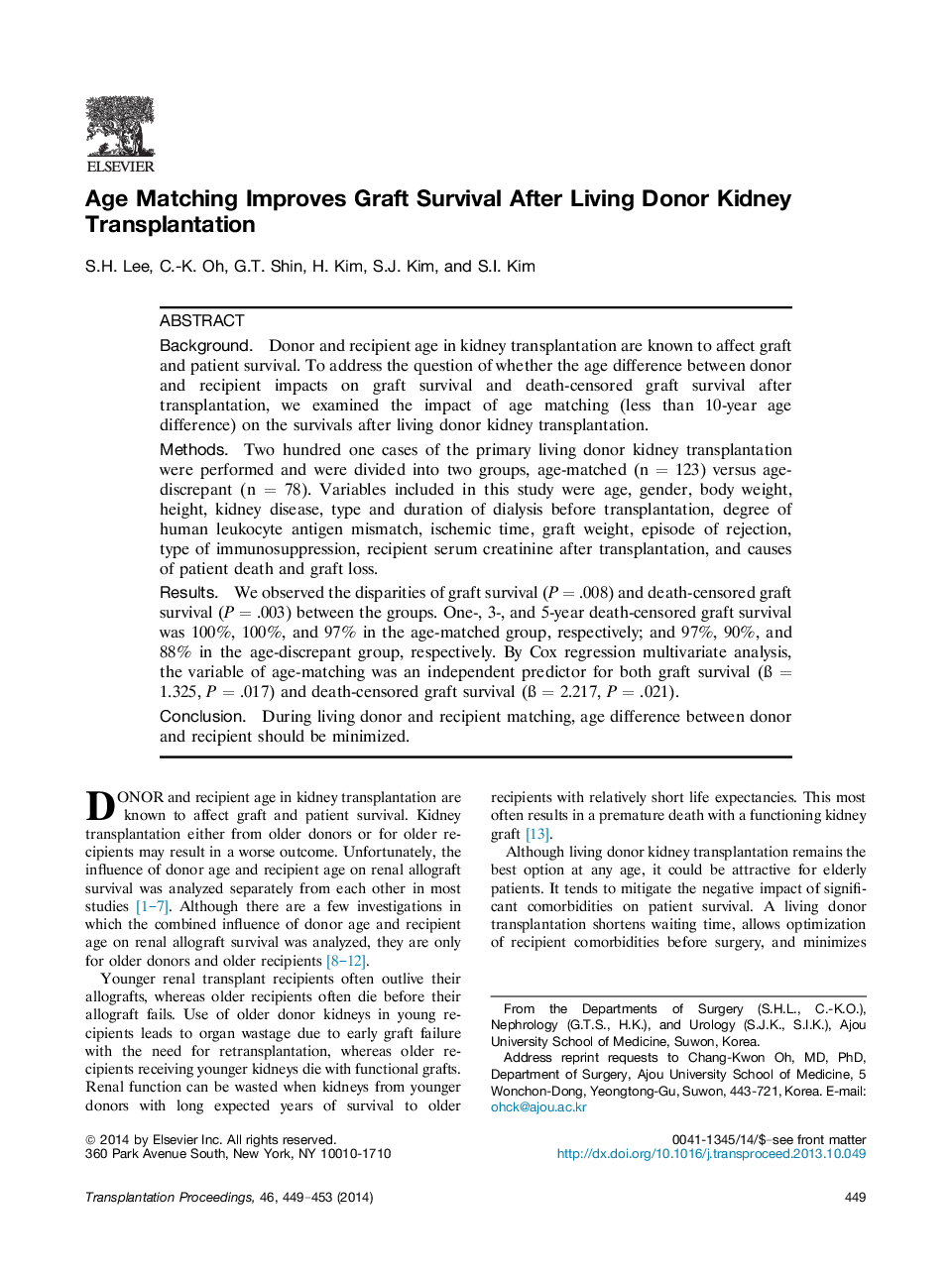| Article ID | Journal | Published Year | Pages | File Type |
|---|---|---|---|---|
| 4258756 | Transplantation Proceedings | 2014 | 5 Pages |
BackgroundDonor and recipient age in kidney transplantation are known to affect graft and patient survival. To address the question of whether the age difference between donor and recipient impacts on graft survival and death-censored graft survival after transplantation, we examined the impact of age matching (less than 10-year age difference) on the survivals after living donor kidney transplantation.MethodsTwo hundred one cases of the primary living donor kidney transplantation were performed and were divided into two groups, age-matched (n = 123) versus age-discrepant (n = 78). Variables included in this study were age, gender, body weight, height, kidney disease, type and duration of dialysis before transplantation, degree of human leukocyte antigen mismatch, ischemic time, graft weight, episode of rejection, type of immunosuppression, recipient serum creatinine after transplantation, and causes of patient death and graft loss.ResultsWe observed the disparities of graft survival (P = .008) and death-censored graft survival (P = .003) between the groups. One-, 3-, and 5-year death-censored graft survival was 100%, 100%, and 97% in the age-matched group, respectively; and 97%, 90%, and 88% in the age-discrepant group, respectively. By Cox regression multivariate analysis, the variable of age-matching was an independent predictor for both graft survival (ß = 1.325, P = .017) and death-censored graft survival (ß = 2.217, P = .021).ConclusionDuring living donor and recipient matching, age difference between donor and recipient should be minimized.
